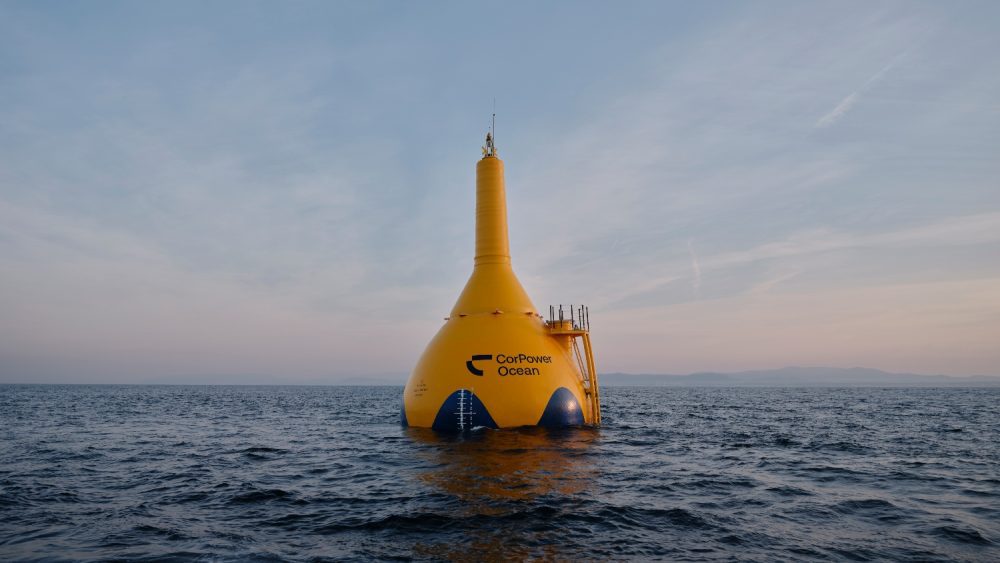In the ever-evolving landscape of renewable energy, a groundbreaking innovation has emerged, capturing the attention of sustainability enthusiasts and tech innovators alike. This giant metal buoy, as highlighted in a recent tweet by Ronald van Loon, is making waves ”quite literally” by generating electricity from the ocean.
The Technology Behind the Buoy
The buoy operates on the principle of converting the kinetic energy of ocean waves into electrical energy. This process involves a series of mechanical and electrical components that work in harmony to harness the power of the sea. As waves move the buoy up and down in the ocean, this motion is transferred to a generator inside the buoy, which then converts it into electricity.
Key Features:
- Sustainability: The buoy provides a clean and renewable source of energy, reducing reliance on fossil fuels.
- Innovation: It represents a significant technological advancement in the field of marine energy.
- Tech4Good: By generating clean energy, the buoy contributes to environmental conservation and sustainability goals.
Applications and Impact
The potential applications of this technology are vast. Coastal communities, remote islands, and offshore facilities can benefit from a reliable and sustainable power source. Moreover, the buoy can be integrated into existing energy grids, providing a supplementary power source that can help stabilize the grid during peak demand periods.
Environmental Benefits:
- Reduction in Carbon Emissions: By replacing fossil fuel-based energy sources, the buoy helps in reducing greenhouse gas emissions.
- Minimal Environmental Impact: The buoy’s operation has a low impact on marine life and ecosystems compared to other energy sources.
Related Innovations in Marine and Renewable Energy
The concept of generating electricity from the ocean is not entirely new, but recent advancements have made it more viable. For instance, the Ocean X platform developed by MingYang Smart Energy utilizes dual-turbine wind energy generation technology capable of withstanding Category 5 hurricanes. This technology harnesses wind energy in deep waters, further expanding the potential of marine-based renewable energy solutions.
Another notable innovation is the development of seawater electrolysis for carbon removal and green hydrogen production by Brineworks. This technology, known as direct ocean capture (DOC), offers a cost-effective method for carbon removal and green hydrogen production. This has a potential for disrupting existing carbon capture methods.
The Future of Ocean-Based Renewable Energy
As the world continues to seek sustainable energy solutions, ocean-based technologies like the giant metal buoy are poised to play a crucial role. The integration of such technologies into the global energy mix can help achieve climate goals and reduce the environmental impact of energy production.
Challenges and Considerations:
- Scalability: While the technology shows promise, scaling it to meet large-scale energy demands remains a challenge.
- Maintenance and Durability: The harsh marine environment can pose challenges for the maintenance and durability of the buoy and its components.
- Regulatory and Environmental Concerns: Ensuring compliance with environmental regulations and minimizing the impact on marine ecosystems are critical considerations.
Conclusion
The giant metal buoy generating electricity is a testament to the innovative spirit driving the renewable energy sector. By harnessing the power of the ocean, this technology not only provides a sustainable energy solution but also paves the way for future advancements in marine energy. As we continue to explore and develop such technologies, the dream of a cleaner, greener future becomes increasingly attainable.
For further reading on related innovations and technologies, explore the following articles:
- Direct Ocean Capture for Carbon Removal
- Ocean X Wind Energy Generation
- Seawater Electrolysis for Green Hydrogen
Check out more AI tools.
Elevate Guest Experience with RoomGenie
Textify Analytics – Affordable Insights at the Speed of AI
